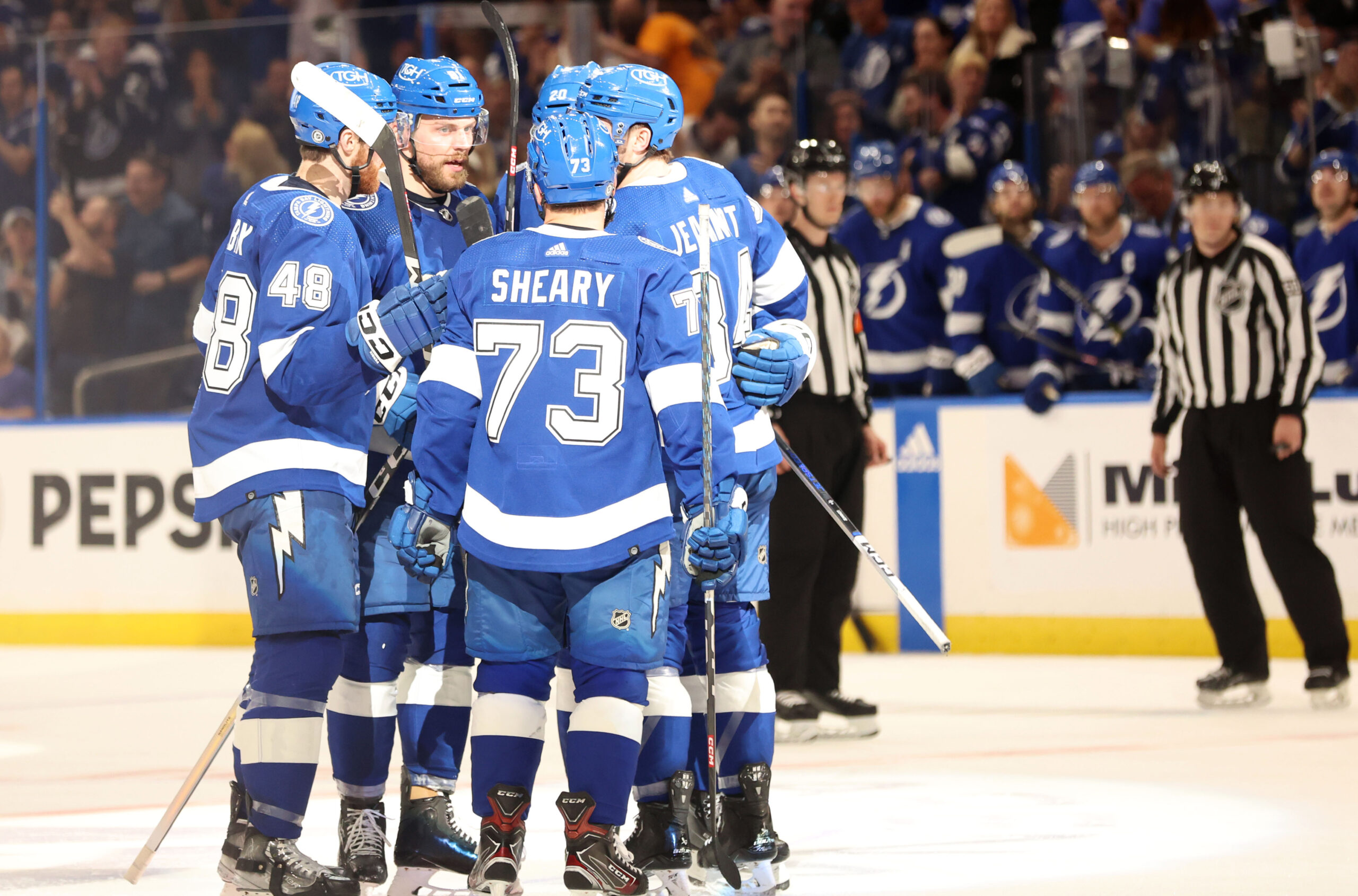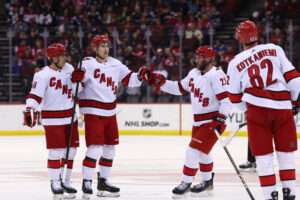Heading into the Stanley Cup Playoffs, the Tampa Bay Lightning operated as the league’s best power play (28.6%). With the Bolts outmatched at even strength against the Florida Panthers, capitalizing on special teams was critical to taking down the top seed in the Atlantic Division. However, the power play struggled in vital situations against the Panthers. The off-season is officially underway for Tampa Bay following their series loss to Florida on Monday night. Let’s analyze what went wrong on the power play and how the top unit may be in store for a drastic change next season.
Tampa Bay Lightning Power Play Drops Eight Percent in Round One
If the Lightning were to defeat the Panthers in a seven-game series, the power play had to be on point. Unfortunately, this scenario was not the case in round one. The Lightning power play scored on 20% of their attempts, an 8.6% drop-off compared to the regular season. As of Wednesday morning, a 20% conversion rate ranks 12th amongst 16 Stanley Cup Playoff teams. Even strength play is not a strong suit of Tampa Bay, so the power play had to push them over the edge. Historically, what trends of the Lightning power play led to this struggle?
The main issue with the Lightning’s power play against the Panthers was over-passing and looking for the perfect play. The Lightning did not get enough pucks on the net during the man advantage. Tampa Bay does not have a shooting talent problem. The Bolts have three 40-goal scorers: Nikita Kucherov, Brayden Point, and Steven Stamkos. Unsurprisingly, the Lightning has historically had this issue, and the data projects an unselfish power play unit.
History and Data Behind The Issue
A statistical trend that pushes this narrative is comparing the shot attempt generation with the shooting percentage of the Tampa Bay power play. During the 2022-23 regular season, Tampa Bay generated 100.48 shot attempts per hour (100.48 CF/60) on the man advantage, ranking 21st in the league. Meanwhile, the Bolts had the third-best power play shooting percentage at 16.96%. This gap between shot attempts and shooting percentage is present in the previous three seasons. The Lightning have not finished in the top 20 of power play shot attempts, but they finish near the top in shooting percentage. This difference in metrics indicates the Lightning are selective with their shots and look for the perfect play. Puck movement is necessary for every power play, but over-passing is ineffective against an aggressive Panthers penalty kill.
Comparing Regular Season to Playoff Data
Tampa Bay adjusted their power play for the 2023-24 season. This past season, Tampa Bay generated 111.9 shot attempts per hour (111.9 CF/60) on the man advantage, ranking 10th in the league. Furthermore, the Lightning had the best power play shooting percentage at 18.56%. An increase in shot attempt volume for the Lightning resulted in the league’s best power-play unit. However, the Lightning stopped shooting the puck on the net against the Panthers in round one.
In five playoff games, the Lightning produced 78.44 shot attempts per hour (78.44 CF/60) on the power play, ranking dead last amongst playoff teams. Yet, the team still managed to finish eighth in power play shooting percentage at 19.05%. This data proves that the Lightning did not get pucks on the net. The aggressive Florida penalty kill did not allow the Lightning to find seam passes cross-ice or cute plays in the bumper position. Unfortunately, the Lightning may lose their power play sniper to free agency in the off-season.
Will The Top Unit Change Next Season?
Ultimately, a lack of shot attempts was the downfall of the Lightning this season. Their greatest strength in the regular season was their kryptonite in the postseason. On top of this, Stamkos may have played his last game in a Tampa Bay uniform. His lethal one-timer from the left circle is a trademark of the Lightning power play for the past 15 years. If Stamkos is out of the picture, this will not help fix the Lightning’s lack of shot attempts on the man advantage. If he does leave, we potentially see 75-point scorer Brandon Hagel filling his role on the left circle. The future of Stamkos and the Lightning power play remains up in the air until the puck drops again in October.
Raw stats via NaturalStatTrick
Main Photo: Kim Klement Neitzel-USA TODAY Sports






